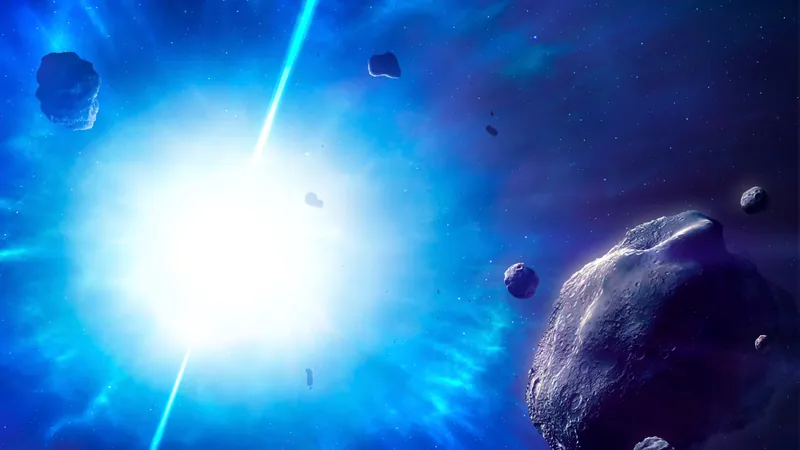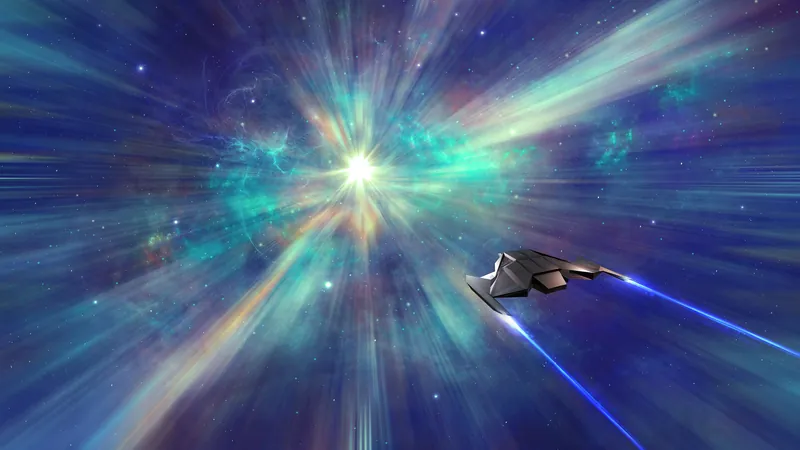
Meet the 'Zombie Star': A Cosmic Enigma Hurtling Through the Milky Way!
2025-04-23
Author: Yu
A Glimpse into the Cosmic Abyss
Astronomers have made a jaw-dropping discovery: a rare and extremely powerful star known as a 'zombie star' is racing through the Milky Way at a staggering speed of over 110,000 mph (or 177,000 km/h). This unique stellar entity, officially nicknamed SGR 0501+4516, possesses a magnetic field so intense it could theoretically rip apart human atoms. Its origin, however, remains shrouded in mystery and could reshape our understanding of neutron stars.
What Makes SGR 0501+4516 a Zombie Star?
SGR 0501+4516 is classified as a magnetar, a type of neutron star known for its incredibly strong magnetic fields. Neutron stars are the remnants of massive stars that have undergone a gravitational collapse, shrinking down to the size of a large city while retaining the mass of our sun. Among cosmic objects, neutron stars hold the title of being the densest, second only to black holes.
In Search of Answers
First identified in 2008, this magnetar was located about 15,000 light-years from Earth. Recent studies published in the journal Astronomy & Astrophysics have revealed that SGR 0501+4516 is traveling much faster than previously thought, raising eyebrows among scientists. Using data from the Hubble Space Telescope and the European Space Agency's Gaia spacecraft, astronomers uncovered that its trajectory challenges existing theories about how magnetars form.
A Magnetic Powerhouse
The magnetic field of SGR 0501+4516 is estimated to be around 100 trillion times stronger than Earth's magnetic shield. NASA noted that if this stellar behemoth were to pass by our planet at just half the distance to the Moon, it could eradicate all magnetic cards on Earth. Any human coming within 600 miles would face catastrophic disintegration at the atomic level — fortunately, it's not on a collision course with Earth.
Rethinking Stellar Birth
Conventional wisdom has held that magnetars are formed from the explosive deaths of massive stars. This star was initially thought to have originated near a supernova remnant known as HB9. However, new data indicates it's moving too quickly and in an incorrect direction to align with this theory. As NASA representatives pointed out, tracing its trajectory revealed no connection to any known supernova remnants or massive star clusters.
Theories on Creation
Researchers are now considering an alternative scenario: that SGR 0501+4516 may have emerged from the direct collapse of a white dwarf, rather than from an explosive supernova event. Study co-author Andrew Levan explained, "Under specific conditions, a white dwarf can collapse into a neutron star without going supernova, which is a possibility for this magnetar." This new insight could not only clarify the origins of SGR 0501+4516 but also explain the enigma behind numerous fast radio bursts detected across the universe.
The Quest Continues
As researchers dive deeper into the mysteries of SGR 0501+4516, one thing is clear: this cosmic 'zombie star' could hold the keys to understanding more about neutron stars, magnetars, and the intricate dance of cosmic evolution. Stay tuned as the universe continues to unveil its stunning secrets!






 Brasil (PT)
Brasil (PT)
 Canada (EN)
Canada (EN)
 Chile (ES)
Chile (ES)
 Česko (CS)
Česko (CS)
 대한민국 (KO)
대한민국 (KO)
 España (ES)
España (ES)
 France (FR)
France (FR)
 Hong Kong (EN)
Hong Kong (EN)
 Italia (IT)
Italia (IT)
 日本 (JA)
日本 (JA)
 Magyarország (HU)
Magyarország (HU)
 Norge (NO)
Norge (NO)
 Polska (PL)
Polska (PL)
 Schweiz (DE)
Schweiz (DE)
 Singapore (EN)
Singapore (EN)
 Sverige (SV)
Sverige (SV)
 Suomi (FI)
Suomi (FI)
 Türkiye (TR)
Türkiye (TR)
 الإمارات العربية المتحدة (AR)
الإمارات العربية المتحدة (AR)